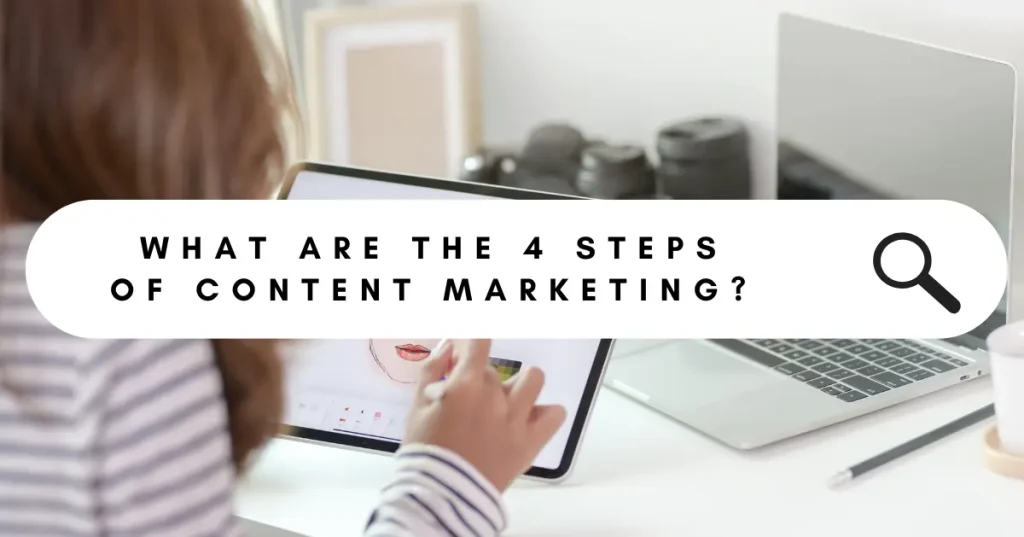A structured approach in content marketing is like following a clear plan. It helps you know where you’re going and why. It makes sure that your content fits with what you want to achieve in your business. By being organized, you can keep your message the same across all your content. This makes people recognize and trust your brand more.
Structured methods also save time and make your content more effective. Plus, they let you change things if needed, so you can always stay on track toward your goals. Overall, it’s about having a roadmap to success in reaching your audience and growing your business.
The basics of content marketing are important because it helps you create a plan to reach your goals. It saves time and resources by avoiding guesswork and allows you to adapt to changes in trends and audience preferences easily.
Table of Contents
Step 1. Planning Your Content Strategy
Understanding Your Audience
Gather data about your target audience’s demographics, interests, and preferences. Develop detailed profiles of your ideal customers to better understand their needs and challenges. Study your competitors’ content strategies to identify gaps and opportunities in the market.
Setting Goals and Objectives
You want to achieve with your content marketing efforts, such as increasing brand awareness, driving website traffic, or generating leads. Identify specific metrics that will measure the success of your content strategy, such as website engagement, email sign-ups, or conversion rates. Make sure that your content goals align with broader business objectives to contribute to overall success.
Creating a Content Plan
Brainstorm content ideas that align with your audience’s interests and address their pain points. Develop a schedule for creating and publishing content, including timelines, deadlines, and responsible team members. Determine the types of content you’ll create, such as blog posts, videos, infographics, or podcasts, based on your audience preferences and platform suitability.
Content Promotion and Distribution Strategy
The platforms and channels where your audience is most active, such as social media, email newsletters, or industry forums. Plan how you’ll promote your content, including organic tactics like social media sharing and paid strategies such as advertising or influencer partnerships. Opportunities to repurpose your content across different formats or syndicate it on third-party platforms to reach a wider audience.
Budget and Resource Allocation
Determine the human, financial, and technological resources needed to execute your content strategy effectively. Locate funds for content creation, distribution, promotion, and measurement activities based on your goals and priorities. The expected return on investment from your content marketing efforts to justify budget allocation and demonstrate value to stakeholders.
Measurement and Analytics
Key performance indicators to assess the effectiveness of your content strategy and make data-driven decisions. Measure audience engagement metrics such as page views, likes, shares, comments, and conversion rates to gauge content effectiveness. Use insights from performance data to refine your content strategy, optimize content performance, and improve results over time.
Step 2. Content Creation
Content creation is the process of producing material that resonates with your target audience. To start, understanding your audience is key. Dive deep into who they are, what they like, and what problems they have. This insight will guide you in creating content that speaks directly to their needs and interests.
Once you have a good grasp of your audience, focus on making your content compelling and valuable. Think about what will grab their attention and keep them engaged. Whether it’s through informative articles, entertaining videos, or visually appealing infographics, choose formats that will resonate with your audience and effectively communicate your message.
Consistency in your brand’s voice and messaging is crucial. Your content should reflect your brand’s personality and values to maintain a cohesive identity across all platforms. This ensures that your audience can easily recognize and connect with your brand.
Step 3. Content Distribution
Content distribution is the process of getting your content in front of your audience. Once you’ve created your content, you need to make sure it reaches the people who will benefit from it. Social media platforms like Facebook, Instagram, Twitter, and LinkedIn are great for sharing your content with a wide audience. Each platform has its unique features and user base, so tailor your content to fit each platform’s style and audience preferences.
Email marketing is another effective distribution method. You can send your content directly to your subscribers’ inboxes, ensuring they don’t miss out on your latest updates and offerings. Make sure your emails are personalized and relevant, and provide value to your subscribers.
Additionally, consider leveraging content syndication platforms or guest posting opportunities on industry-specific websites and blogs. This allows you to reach new audiences and establish your authority in your niche.
Step 4. Monitoring and Analysis
Monitoring and analysis in content marketing is about keeping a close watch on how your content is performing and delving into the details to understand why. It involves tracking various metrics such as website traffic, engagement rates on social media, email open and click-through rates, and conversion rates. These metrics help you gauge the effectiveness of your content in attracting, engaging, and converting your audience.
By using tools like Google Analytics, social media analytics platforms, and email marketing software, you can gather valuable insights into your content’s performance across different channels. You can see which pieces of content are resonating the most with your audience, which channels are driving the most traffic, and where you might be losing potential customers.
Additionally, monitoring audience engagement involves analyzing how users interact with your content. This includes looking at metrics like time spent on page, scroll depth, and the number of shares and comments. By understanding how your audience engages with your content, you can identify areas for improvement and create more targeted and engaging content in the future.
Conclusion
The four steps of content marketing planning, creating, distributing, and monitoring are key to success. Planning involves knowing your audience and setting goals. Creating content means making stuff that people will like and find useful. Distributing content means putting it where your audience can see it, like on social media or through email.
Monitoring involves keeping an eye on how your content is doing and making changes based on what you learn. By following these steps, businesses can better connect with their audience, get more people interested in their brand, and achieve their marketing goals. It’s all about putting the right content in front of the right people at the right time and using feedback to make it even better.



